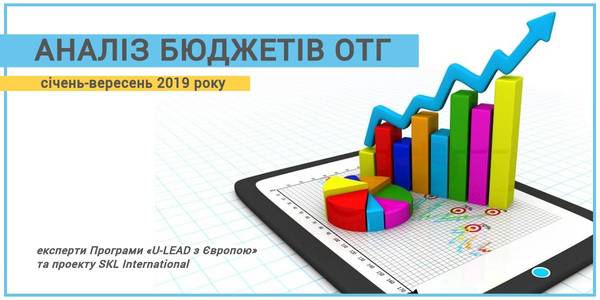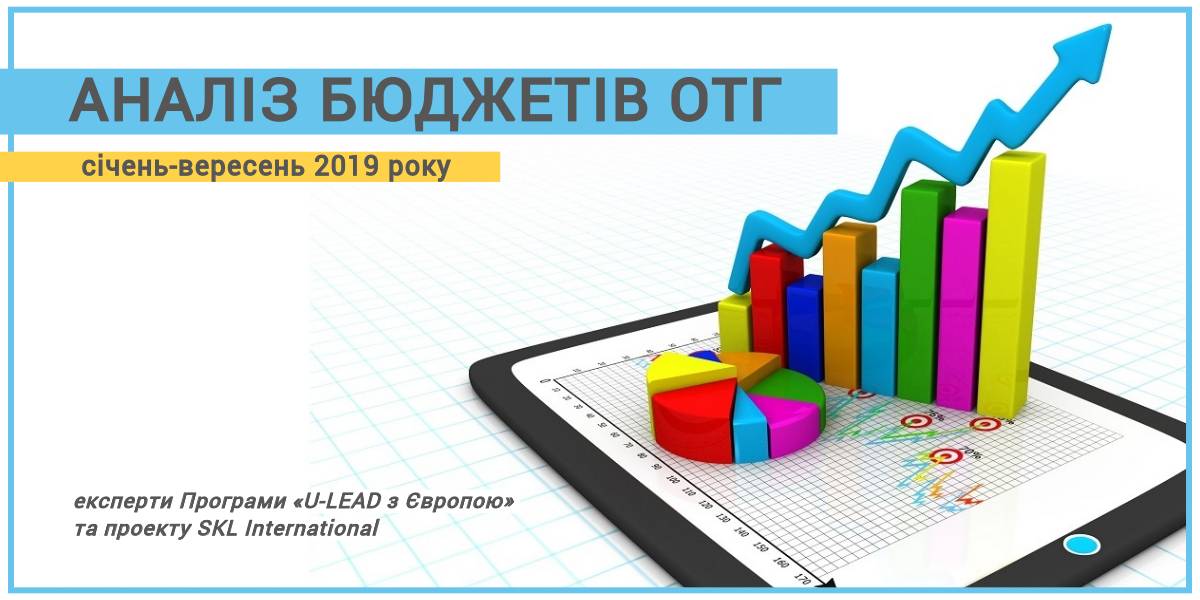Budgets of 806 AHs. Rating for 9 months of 2019
The level of financial solvency of amalgamated hromadas remains one of the key aspects in determining their ability to perform the tasks and functions they are entrusted with. Of course, hromada’s capacity is measured by many factors and parameters, but financial resources are a fundamental component of its activity.
According to the results of January-September 2019, the experts analysed the individual financial indicators of 806 AHs, namely, calculated four indicators characterising the financial aspects of the activities ofamalgamated hromadas:
- income per capita;
- budget subsidisation level;
- share of expenditures for the maintenance of the management apparatus in the AH financial resources;
- salary share in general fund expenditures.
806 AHs were grouped by experts according to the population size criterion. In addition, for a more accurate comparison, the cities of oblast significance that have undergone amalgamation or accession procedure under the Law of Ukraine “On Voluntary Amalgamation of Territorial Hromadas” were grouped separately:
Grouping of AHs is presented in the table below:
|
Groups |
Grouping criteria |
Number of AHs |
% to the total number of AHs |
Total population in the AH group, thousand people |
% of the total population of AHs studied |
|
||
|
Group 1 |
population of more than 15 thousand residents |
96 |
11.9% |
2 031.0 |
24.4% |
|
||
|
Group 2 |
population from 10 to 15 thousand residents |
124 |
15.4% |
1 519.2 |
18.3% |
|
||
|
Group 3 |
population from 5 to 10 thousand residents |
267 |
33.1% |
1 881.7 |
22.6% |
|
||
|
Group 4 |
population of less than 5 thousand residents |
292 |
36.3% |
1 000.5 |
12.0% |
|
||
|
Group 5 |
AHs-cities of oblast significance |
27 |
3.3% |
1 882.8 |
22.7% |
|
||
|
Total |
806 100% |
8 315.2 |
100.0% |
|
||||
Based on these criteria, the experts presented results of the implementation of individual indicators of local budgets in 806 AHs over 9 months of 2019:
Indicator 1. The per capita income is calculated as the ratio of the total revenue of the general fund, excluding transfers, to the number of residents of the respective AH. That is, only general fund revenue mobilised to the budget in the relevant territory is included in the calculation.
According to the results of January-September 2019, UAH 28.1 billion came to the budgets of 806 AHs. Hromadas received UAH 3381.4 per capita.
In 256 hromadas out of 806 AHs (31.8% of the total number) the per capita income exceeds the average in all AHs.
Indicator 2. The budget subsidisation level (share of base / reverse subsidy in general fund revenues) was calculated as the ratio of base or reverse subsidy amount to the volume of general fund revenues (excluding state budget subventions).
Hromadas-cities of oblast significance from Group 5 are least dependent on subsidy resources from the state budget. In Group 1, the highest level of subsidy is 50.0% (only one hromada has such a level. In general, only 4 AHs in this group have a subsidisation level above 30).
Indicator 3. The share of expenditures for the maintenance of the management apparatus in the AH financial resources is defined as a percentage of expenditures for the maintenance of the management apparatus of local self-government bodies in the amount of general fund revenues (excluding all types of transfers from the state budget).
Group 1 includes 47 AHs that have management expenditures exceeding 20% of own revenues, of which 53.8% in one AH.
Among Group 2 AHs, management expenditures in 81 hromadas exceed 20%.
In Group 3, namely in 211 hromadas, management expenditures exceed 20% of own revenues.
In Group 4, the number of AHs with management expenditures in excess of 20% of own revenues is 266.
In Group 5 there are 10 AHs-cities of oblast significance with expenditures on management maintenance exceeding 20% of their own revenues.
Indicator 4. Salary share in general fund expenditures is defined as a percentage of general budget expenditures on salaries with accruals to the amount of general budget fund expenditures excluding transfers from the AH budget to other budgets.
The average salary payment expenditures per AH is: 73.6% in Group 1 (the highest ratio of expenditures on salaries is 86.0%), 73.4% in Group 2 (the highest indicator of salary expenses amounts to 89.5%), 75.0% in Group 3 (the highest indicator of salary expenditures is 93.8%), 76.2% in Group 4 (the highest ratio of expenditures on salaries makes up 92.5%), 48.9% in Group 5 (the highest indicator of salary expenses amounts to 77.9%).
The analysis again confirms the opinion that one of the best options for further development for hromadas with low financial capacity is their accession to other territorial hromadas and formation of a larger AH in size and population.
These materials were prepared as a result of local budget performance by 806 AHs over January-September 2019 on the basis of the data provided by the Ministry of Finance of Ukraine, State Treasury Service of Ukraine, State Statistics Service of Ukraine, openbudget.gov.ua data, by the experts of the U-LEAD with Europe Programme and SKL International project:
- Viktor Ventsel, U-LEAD with Europe Programme expert
- Igor Gerasymchuk, SKL International project expert
The full version is available in Ukrainian – please click HERE

Attached files:
Tags:
Source:
Програма «U-LEAD з Європою»

Share the news:
15 July 2025
Навчання для підприємців із культурних та...
Швейцарсько-український проєкт «Згуртованість та регіональний розвиток України», UCORD та формація Lanka.pro...
15 July 2025
Начальник Очеретинської військової адміністрації Покровського району Донецької області Микола Коваленко про...
14 July 2025
Аналіз положень Бюджетної декларації України на 2026-2028 роки
Аналіз положень Бюджетної декларації України на...
Автор: Ігор Герасимчук, експерт Програми Polaris «Підтримка багаторівневого врядування в Україні» Бюджетна...
14 July 2025
Partnerships for resilience: key takeaways from URC 2025 panel
Partnerships for resilience: key takeaways from...
At the Ukraine Recovery Conference (URC 2025) in Rome, a high-level panel discussion was held on the role of...
